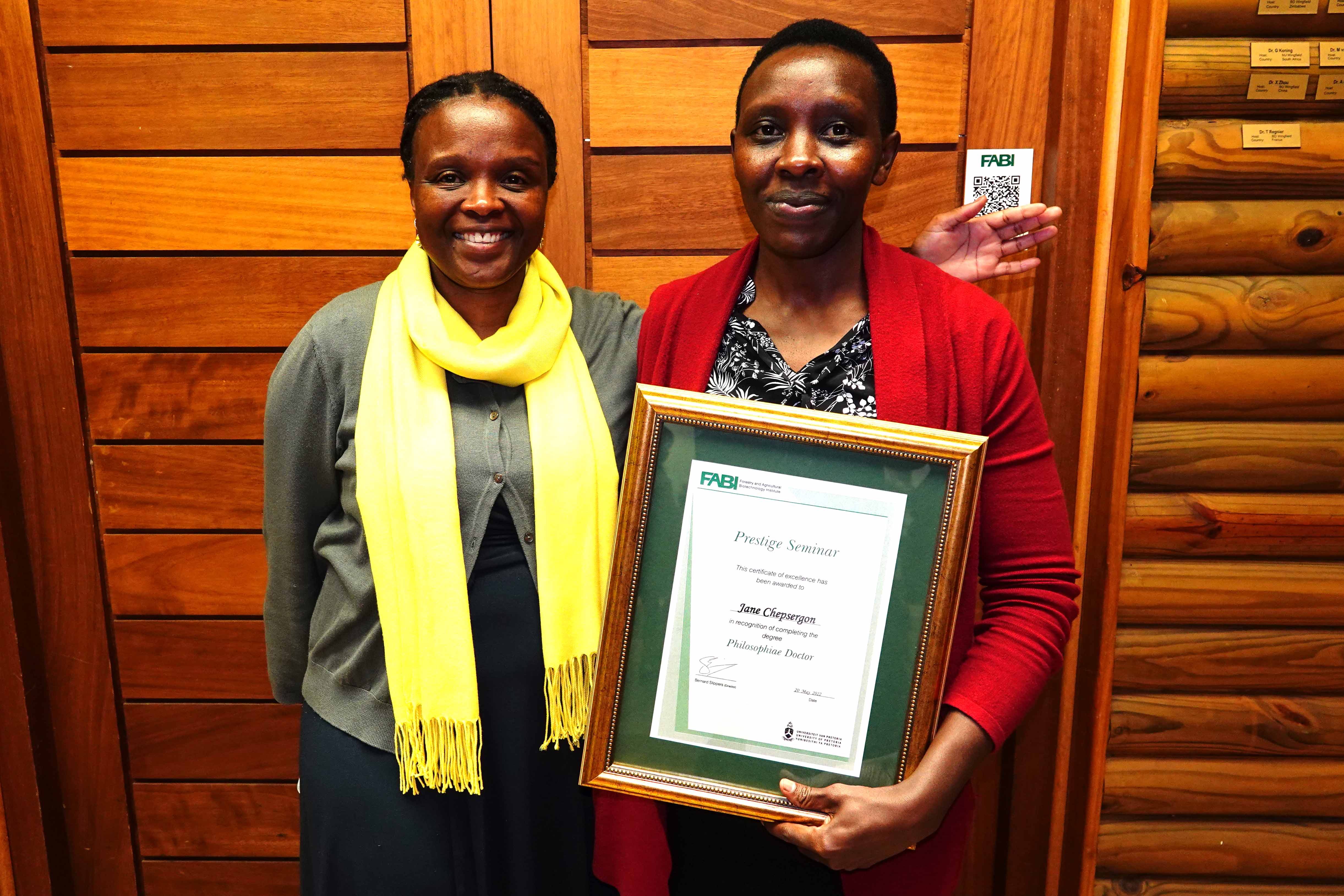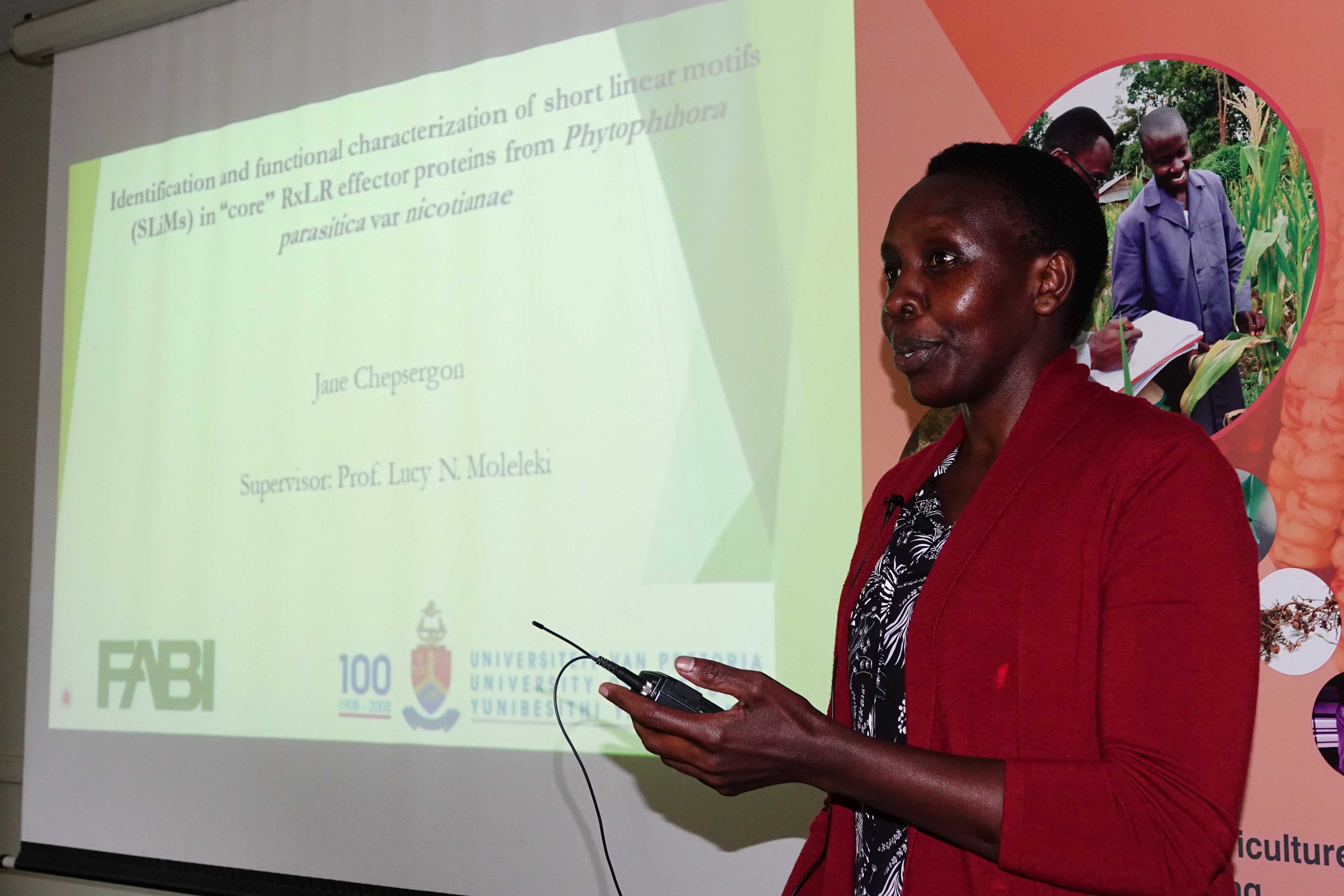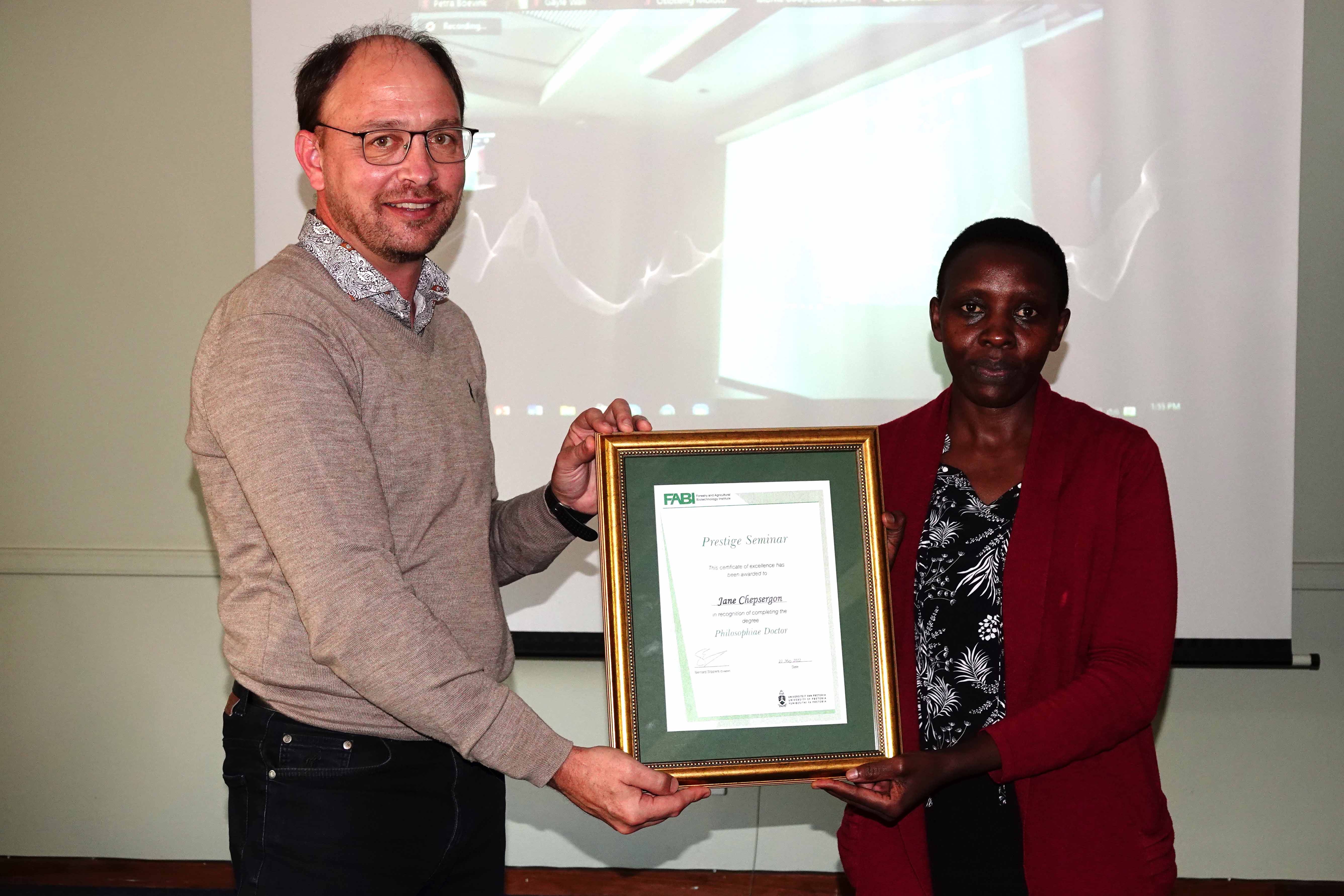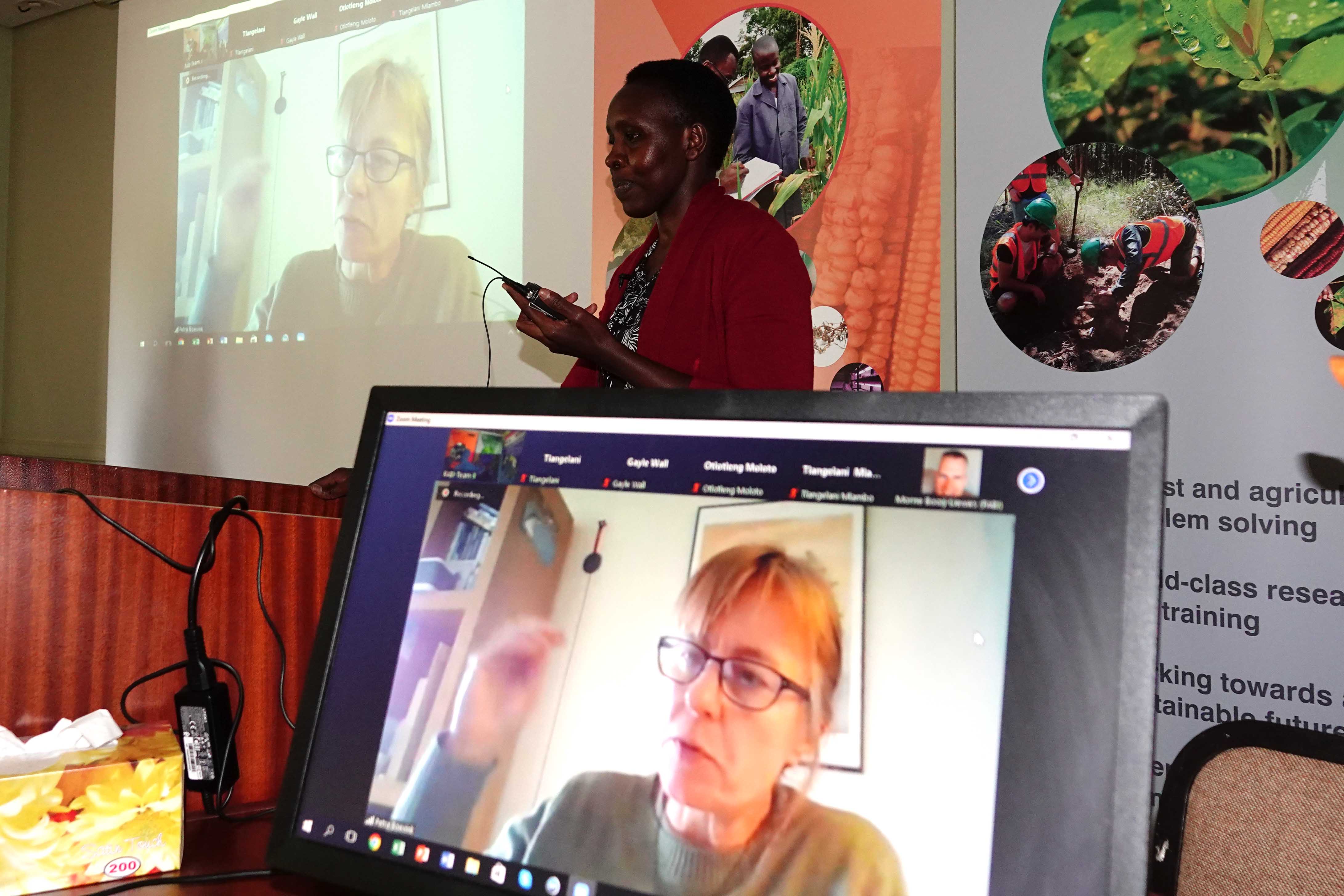Jane Chepsergon celebrates the successful completion of her PhD 2022-06-01
Congratulations to Jane Chepsergon on successfully completing her PhD! Jane presented her Prestige Seminar “Identification and Functional Characterization of Short Linear Motifs (SLiMs) in “Core” RxLR effector proteins from Phytophthora parasitica var nicotianae” on 20 May. Professor Lucy Moleleki, Jane’s primary supervisor described her as “inspirational and always willing to help others and extend herself” and she looked forward to seeing her mature as a researcher. Jane will soon start a postdoctoral fellowship under Prof. Moleleki’s supervision. The examiners for her thesis were the University of Pretoria’s Prof. Noëlani van den Berg, Dr Petra Boevink of the James Hutton Institute in Scotland and Prof. Franck Panabieres of the Institut Sophia Agrobiotech in France.
Jane employed a bioinformatics pipeline to identify secreted RxLR effectors in 11 strains of P. parasitica as well as those that are conserved among these strains. The total number of potential RxLR effectors secreted by P. parasitica strains ranges from 165 to 358. Of these, 71 were found to be present in all 11 strains of P. parasitica, hence these were designated “core” RxLR effectors (CREs). The identified CREs were further shown to encode intrinsically disordered regions (IDRs) as well short linear motifs (SLiMs). Using PpRxLR1 effector as a case study, she established that the SLiM encoded in this effector mediates cell death inducing activity of PpRxLR1 effector that promotes the infection of P. parasitica. Similarly, the SLiM was shown to facilitate the interaction between PpRxLR1 effector and its host target protein. However, it was shown to be dispensable for effector subcellular targeting into the host cell. Together, her findings indicate that PpRxLR1 could be an important virulence RxLR effector of P. parasitica, promoting the pathogen’s infection with the help of its SLiM. Uncovering the mechanisms of effector interference with targeted host functions is a critical step towards understanding host-pathogen interactions and this can be harnessed to breed for durable resistance in plants.





